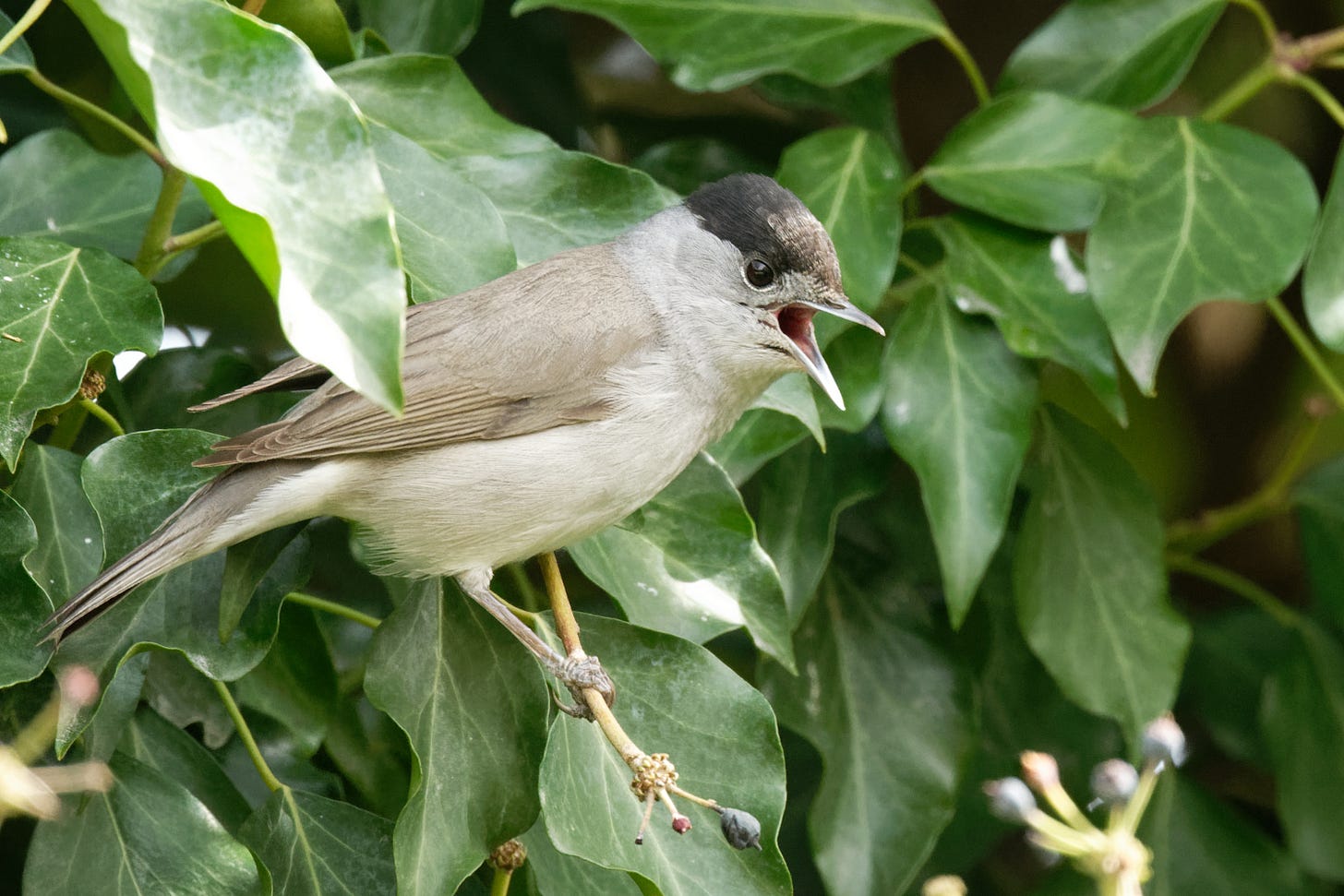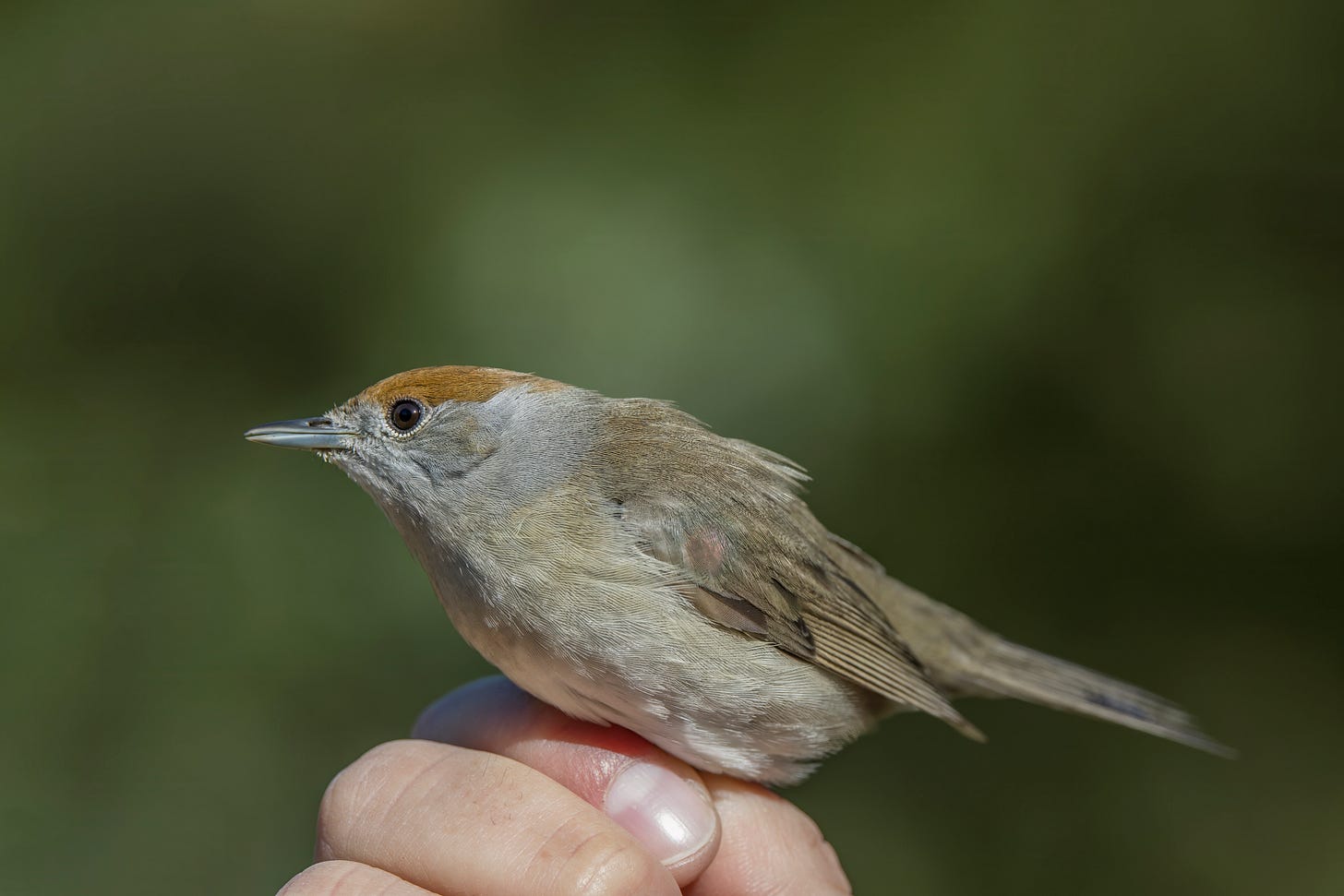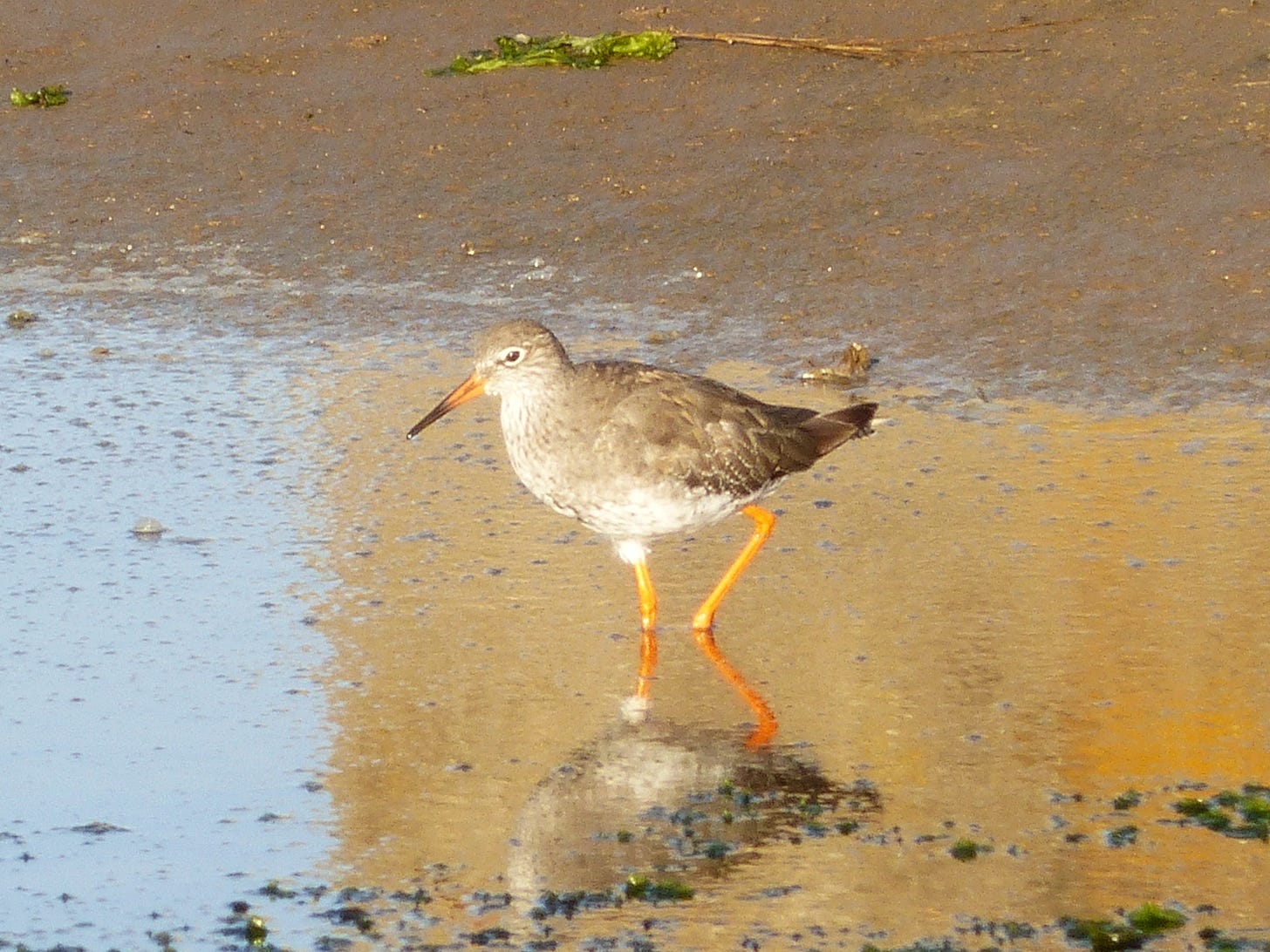Blackcap
I’ve signed a few petitions in my time. Never started one, though. But perhaps the time has come.
It’s not a weighty issue in the grand scheme of things, but it’s tugged away at the back of my mind for a while, and it is, I think, symptomatic of a wider malaise.
This would be the title of my petition: “Change the English name of the bird known as Sylvia atricapilla from ‘blackcap’ to ‘browncap’.”
As I say, not, at first sight, a topic of great importance. But perhaps the underlying rationale will go some way towards explaining it. To illustrate said rationale, I present two photographs.
Here, courtesy of Wikimedia user Marie-Lan Taÿ Pamart, is a male blackcap.
And here, courtesy of Charles J Sharp of the same Wikiparish, is the female of the species.
You will, I hope, appreciate the point I’m driving at.
Systemic sexism has, historically, undermined the naming of birds, and it’s also had a hand in the way we perceive them. For centuries it was thought that male songbirds were the only ones to sing, an assumption now shown to be wrong. Not that female birdsong is universal – the current reckoning has it occurring in between 65 and 70% of songbird species, and usually not nearly as obvious or insistent – but it turns out that the more people look into the subject, the more widespread it’s found to be. Funny, that.
Regardless of whether it’s the male or the female, the blackcap, as noted naturalist Gilbert White put it, has a “full, sweet, deep, loud and wild pipe”.
Not wrong, Gilbert. Very much not wrong.
The attractiveness of the blackcap’s song was also extolled, in rather less poetic terms, by one of White’s regular correspondents, the lawyer, antiquary and naturalist Daines Barrington, who rated it third only to the nightingale and the linnet in this chart from his Experiments and Observations on the Singing of Birds (1773) – albeit appended with the dismissive term “Norfolk mock nightingale”, as if its song were a poor man’s alternative to the real thing, and – shudder – a regional one, at that:
If, by some happy coincidence involving a bizarre distortion of the space-time continuum, I (b. 1965) were able to organise a sit-down with Barrington (1727/8 – 1800) I would restrict myself to one subject, eschewing all others.
I would bypass his extensive correspondence with White, gloss over his Observations on the Statutes, chiefly the more ancient, from Magna Charta to 21st James I (1766) and his Tracts on the Probability of reaching the North Pole (1775), and pay not one whit of attention to his encounter with Dolly Pentreath, supposedly the last speaker of Cornish. I would even forbear to ask him, fascinating though the answer would no doubt be, to go into more detail about what it was like to hear the young Mozart play (“he had worked himself up to such a pitch, that he beat his harpsichord like a person possessed, rising sometimes in his chair”).
No, the questions I would ask him concern the chart above.
I’d open with some gentle probing about the idiosyncrasies of the scoring system – even numbers only, except 17 and 19 of course, and a wilful snub for the queen of mediocre scores, 10 out of 20. I might then ask him what he’s got against blackbirds that induced the ludicrous total of 12 out of 50 – perhaps he was viciously attacked by the song of a blackbird as a child? And I might round things off by taking him to task for his reluctance – in direct opposition to the fast-and-loose attitude of Strictly Come Dancing judges in recent years – to award top marks. The sequence of 19s awarded to the nightingale seems particularly pointed, the implication being that, while clearly a leading exponent in its chosen sphere, it still falls – in ways presumably unknowable to the bird – tantalisingly short of perfection, a situation remediable only with the kind of continued and unswerving dedication to its craft it has so far, albeit narrowly, failed to exhibit.
Barrington appended his marks with this caveat:
“I must also here observe, that my nightingale was a very capital bird; for some of them are so vastly inferior, that the bird-fanciers will not keep them, branding them with the name of Frenchmen.”
Well that’s both nightingales and Frenchmen told.
Redshank
If the name ‘blackcap’ is only partly accurate, you could say the same of the redshank.
“Shank”, of course, is an olde worde for “leg”, and a mere glance at the bird’s limbs will elicit a raised eyebrow.
Orange, surely?
The field guides perpetuate the falsehood, using the mealy-mouthed “orange-red” – one even goes so far as to describe the legs of the adult bird in its winter plumage as “carrot red” which, even allowing for the voguish resurgence of heritage carrots of different hues… well, I mean, come off it.
But while the misnaming of the blackcap stems from historical iniquity, with the redshank the likely explanation is rather more benign, and linguistic in origin – the word ‘orange’ famously entered the English language in the late 16th century, by which time the names of many familiar birds were more or less established. So, redshank it remains, despite the very obvious orangeness of the limbs in question.
As for the bird itself, if you want to find one you’ll do worse than to take yourself to somewhere muddy – a coastal marsh or estuary, perhaps. For the full effect, it will be a chilly autumn day with low fog cloaking the estuary. You might be dreaming fondly of a mug of hot chocolate.
Through the fog comes a series of calls. High-pitched, piercing, far-carrying.
Pyoo-loo-loo – pyoo-loo-loo.
Something like that, anyway. You have to hear it.
It’s this sound that gave the redshank the delightful Orkney folk name, “watery pleep”. And it’s as common a sound as you’ll hear in those places, a sign of the bird’s paranoid restlessness, its liability to fly off at the slightest disturbance, giving that piercing alarm call to its fellow mud-dwellers as an indication that SOMETHING’S WRONG I DON’T KNOW WHAT BUT SOMETHING.
Not for nothing did it earn the nickname “watchdog of the marshes”. For a while it seems content to wade around in the sludge, rootling for invertebrates – then, ten miles away, a buzzard twitches, and off it goes, pyoo-loo-loo-ing for all it’s worth, flying low and direct to a vantage point from which it can monitor the situation and give regular updates.
Must be exhausting.
Bird Culture
Why don’t birds buy Bentleys?
Incidentally, please thank me for not appending this bit with an atrocious AI-generated image of a bird driving a Bentley, but do, if you like, submit your hand-drawn renditions of such a phenomenon to levparikian at mac dot com – best one wins one of my books (UK only, I’m afraid).
And yes, I am aware that I still haven’t chosen a winner of the last giveaway, which is now several weeks ago. Tomorrow. Promise.








Blackbird is a worse name than blackcap and not just because of gender issues. Confusion of people seeing black birds and thinking they are blackbirds. Brownbird would be far worse though! Surely the Blackbird needs a better name…
More importantly any idea what a titlark is? And alternative name for Siskin is intriguing too…
WATERY PLEEP!